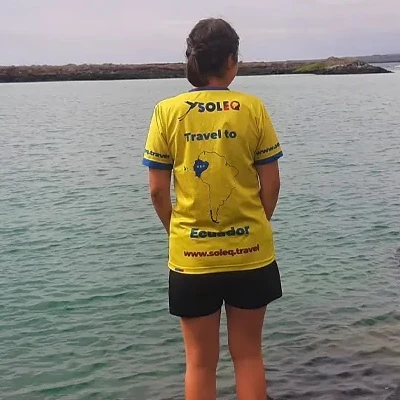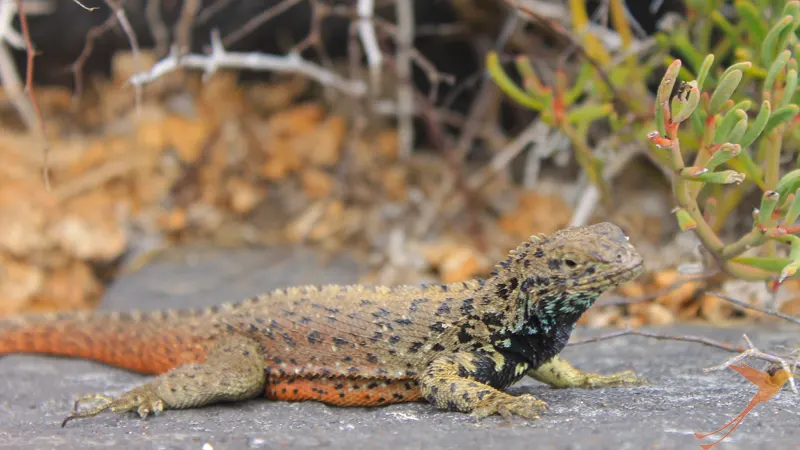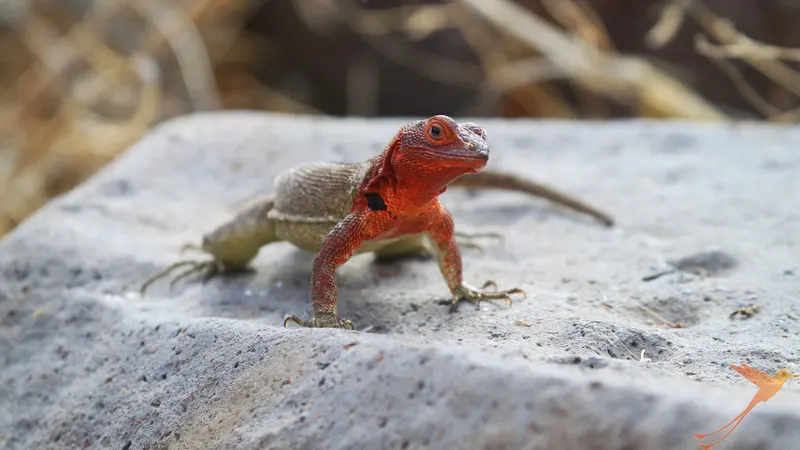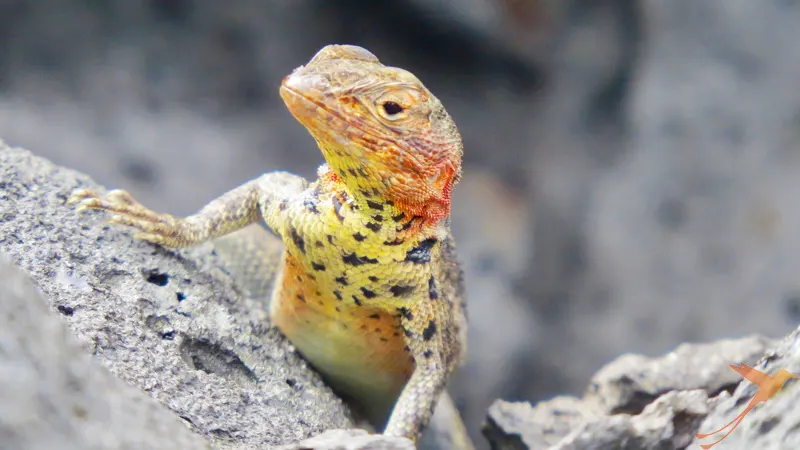
Another animal that enriches the Galapagos Islands located west of Ecuador is the lava lizard Galapagos, which is also called the wedge-tailed iguana.
The Galapagos lava lizard is also a species typical of the archipelago, found mainly on the large islands. While the lizard species, land iguana and marine iguana are sporadic, this one is the most common.
In total, there are seven different species of lava lizard that inhabit the Galapagos. Six of the species are found on specific islands, but one species inhabits ten Galapagos islands. Their body has a length of only 5-10 cm, but the tail part is as long or even longer than their body, so that their total size is about 25 cm. This makes the lava lizard about one meter smaller than the marine and land iguana. The size also depends on the sex of the animals and varies from island to island. To protect itself and distract enemies, the wedge-tailed iguana has a strategy that allows it to flee from dangerous situations. In the event of a threat, the Galapagos lava lizard may drop its tail, distracting the hostile animal and allowing the lizard to seize the opportunity and escape.

Males are usually spotted blue gray to brown, with black outlining the neck, while females have no spots or only very light spots. Black lava lizards are a rarity, so you must be lucky to spot one.
Furthermore, males are marked with a light stripe around the neck and are marked with a crest running across the back. Unlike males, females lack these two features. However, they do possess a type of salmon, orange or brick-red colored “cheek patch”. It extends from the base of the forelegs and neck across the face to the eye.
In the event of sudden temperature fluctuations or possible danger, the lava lizard also changes color. When threatened, the color adapts to the environment, providing the wedge-tailed iguana with optimal camouflage and protection.

Habitat, Diet and Reproduction
The Galapagos lava lizard can be found throughout the year and is mainly found on the islands of Isabela, Santa Cruz, Fernandina, Santiago and Santa Fe. It is primarily diurnal, with less activity during the midday heat, and is often found on warm rocks near the coast. Lava Lizards also prefer to feed on insects, spiders, grubs, ants, and beetles. This diet is helping to prevent and control pests. In some cases, they also climb trees and consume freshly sprouted leaves. Wedge-tailed iguanas also eat each other in some cases, making them cannibals.
Males defend their territory by competing with other male lava lizards. To compete, wedge-tailed iguanas begin movements reminiscent of push-ups. The background for this behavior is to appear as strong and deterrent as possible, so that the opposing lizard flees voluntarily. However, if it is not clear from the push-ups which lava lizard is stronger, or if none of the iguanas retreats voluntarily, a fight may ensue. Bites and blows with the tail are common in such a skirmish. To see a duel, you don’t have to wander into cut-off areas, because often they take place on elevated objects, such as walls, posts, or statues, and thus easily visible to humans.

Before mating, males grab females by the back of the neck or back and sometimes carry them short distances. Females lay between one and six white, leathery eggs that are about the size of a pea. On Galapagos Island Santa Cruz, two eggs are most common, laid in burrows dug between May and June. It takes three months for baby lava lizards to hatch from the small eggs.
Endangerment
Unfortunately, little is known about the current endangerment status of this species.
However, its occurrence is limited, and therefore it can be counted among the “near threatened species”. It is also certain that the animals are not at the bottom of the food chain and that especially domestic cats and rats pose a threat to them. As with the marine iguanas, the climate phenomenon “El Niño”, which describes sudden changes in weather and is intensified by global warming, is a threat to the lava lizard.

Would you like to watch a spectacular push-up fight or see how the color of these little iguanas’ changes? We will take you to the Galapagos Islands and show you this untouched and truly special nature!
Join us in Ecuador, visit the Galapagos Islands and discover the Galapagos giant tortoise and other unique animals you have not seen before. Climb with us volcanoes like Cotopaxi or Chimborazo, discover tropical animals and plants in the Amazon rain forest or drive with us along the “Ruta del Sol”, the road along the Pacific Ocean. We invite you to the land of four worlds and look forward to showing you Ecuador!







